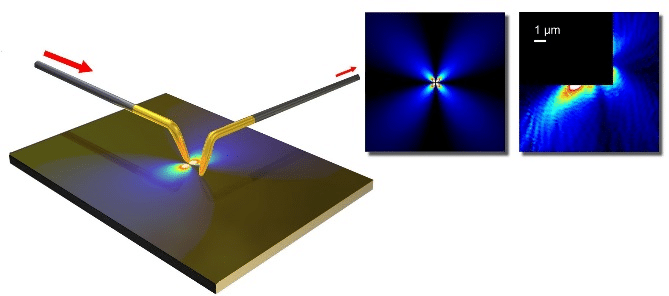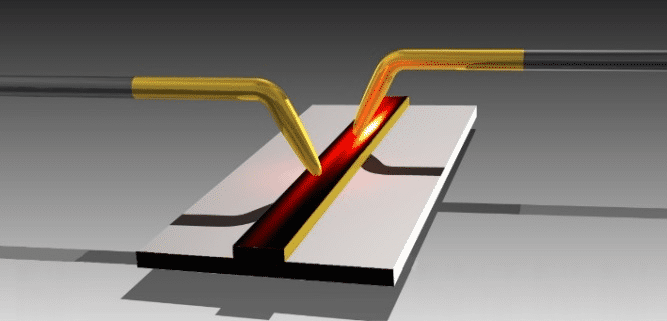
Polarization-Sensitive Dual-SNOM for Investigation of Plasmonic Propagation
By combining two aperture SNOMs into a Dual-SNOM setup, we can perform near-field illumination of samples on a freely chosen position by a first tip, while using the second tip to scan the sample surface and map the optical near-field [1]. A specially developed approach-warning mechanism serves to prevent from collision of the tips [2].
With this setup, we investigated the polarization characteristics of SPP excitation and detection on planar gold films (Fig.1) [1]. Additionally, we studied the dynamics of plasmonic leaky modes in gold strip waveguides by exciting and detecting these modes in near-field using the Dual-SNOM setup [3]. In waveguides which support several leaky modes, mode beating patterns were observed (Fig.2). By varying the excitation position across the waveguide width, the relative excitation strengths of the different modes could be finely tuned.
The capability of selective and local excitation of modes and mapping of their optical near-fields at the same time makes the Dual-SNOM a valuable and versatile tool for the characterization of a wide range of micro- and nanooptical devices and structures.

Fig.1. Polarization resolved near-field mapping of plasmonic dipole by the Dual-SNOM setup.

Fig.2. Near-field excitation and detection of plasmonic modes in a stripe waveguides by the Dual-SNOM setup.
[1] A. E. Klein, N. Janunts, M. Steinert, A. Tünnermann, and T. Pertsch, Nano Lett. 14, 5010 (2014).
[2] A. E. Klein, N. Janunts, A. Tünnermann, and T. Pertsch, Appl. Phys. B 108, 737 (2012).
[3] A. E. Klein, N. Janunts, S. Schmidt, S. Bin Hasan, C. Etrich, S. Fasold. T. Kaiser, C. Rockstuhl, and T. Pertsch, manuscript in preparation.
norik.janunts@uni-jena.de
Powered by Eventact EMS